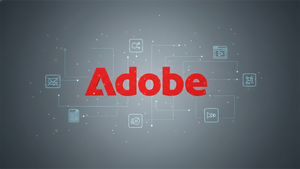Genetics proposes, epigenetics disposes: how our approach to human health changes in the 21st century and how CRISPR-Cas is involved
Los Angeles, California, United States - 06-16-2022 (PR Distribution™) - 
“Change your lifestyle — and you will initiate a chain of biochemical changes that will imperceptibly but steadily help you and, possibly, all your descendants until the end of their life on Earth." This quote belongs to German neurophysiologist P. Spork, who considers epigenetics the breakthrough science that will spearhead progress in the 21st century.
Epigenetics — genetics’ little sister
The Greek prefix epi- means “over” or “upon”; in other words, we are dealing with something that goes above genetics. It is hardly possible to overestimate the role epigenetic mechanisms play in embryonic development: specialized cells of an adult body grow from embryonic cells sharing the same DNA. Scientists think that genetic activity responds to external stimuli, such as stress levels, physical activities, and diurnal rhythms.
The CRISPR/Cas panacea
In case epigenetics has already done its dirty deed, it is still possible to use the “molecular scissors” of the CRISPR/Cas gene editing system, first described by Japanese scientist Y. Ishino.
In nature, CRISPR/Cas is the adaptive immune system used by bacteria to counter various pathogens. It has the following work principle: once a bacterium gets attacked by a virus, its specialized Cas proteins quickly cut out parts of the virus and insert them into the CRISPR cassette in a certain order. The purpose of this process is to “learn the face of the enemy” and develop a specialized immune response.
Soon, scientists started to hope they could use the CRISPR-Cas9 system of Streptococcus bacteria to edit genomes of other organisms and fight genetic disorders. CRISPR-Cas9 is already used for treating various diseases. In spring 2020, scientists reported on the first intraretinal injection of a modified virus to a patient suffering from Leber congenital amaurosis (a disease that causes blindness). The new method involves point base editing of RPE65 gene mutations [8]. Two years ago, The New England Journal of Medicine published the results of the first successful editing of ?-Thalassemia sickle cell anemia mutations.
For discovering the CRISPR/Cas9 “genetic scissors” and their potential for point editing, E. Charpentier (France) and J. Doudna (USA) were awarded the Nobel Prize in Chemistry in 2020.
Big Data in science: pros and cons
It seems that genetic or epigenetic research can hardly be imagined without information technologies. We know bioinformatics methods are commonly used in computational epigenetics in addition to experimental studies; given the explosive growth of epigenomic data sets, computational methods are starting to play a greater role.
For instance, experimental ChIP-on-chip, ChIP-seq, and bisulfite sequencing methods are applied for genome-wide mapping of epigenetic data. They all generate large amounts of data and demand effective ways of processing and quality control. On the one hand, big data is of immense help to scientists. Back in the day, complete genome sequencing took years and required millions of dollars. The next-generation sequencing method can provide the same results for $1200 within 24 hours.
On the other hand, some experts have a somewhat skeptical attitude to big data, as researchers simply cannot keep up with the enormous volumes of information. Besides, the use of supercomputers overhauls the work of scientists. In 2015, Italian biologist F. Mazzocchi noted that classical scientific methods are getting outdated in the age of data and supercomputing, with theories, hypotheses, and discussions becoming obsolete. Scientists no longer search for models, while correlations offered by big data are replacing causality. M. Frické warns his colleagues against putting too much trust in the machine. He claims that “data-driven science will or would find many spurious connections. Data-driven science could easily lead to apophenia and a wild outbreak of hornswoggling”.
Only time will tell how justified these concerns are. Yet one thing is already crystal clear: there will be no going back to the old ways because treatment of the most complex diseases is on the verge of a breakthrough.
About the Author
Rustam Gilfanov is an IT entrepreneur and a venture partner of the LongeVC fund.
Media Contacts:
Company Name: Blacklight agency
Full Name: Vlad
Phone: +74993403383
Email Address: Send Email
Website: https://blacklight.ru
For the original news story, please visit https://www.prdistribution.com/news/genetics-proposes-epigenetics-disposes-how-our-approach-to-human-health-changes-in-the-21st-century-and-how-crispr-cas-is-involved/9190319.
More News
View More



Recent Quotes
View More
Quotes delayed at least 20 minutes.
By accessing this page, you agree to the Privacy Policy and Terms Of Service.